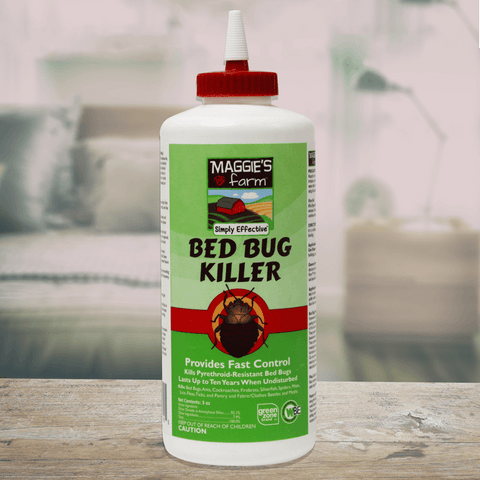Spotting pests in your cabinets and near your food can be unsettling. Unfortunately, that’s what pantry moths, also known as Indian meal moths, do best. These pests are often brought into homes in infested food items from the store. Once inside your pantry, they breed and multiply quickly. We’ve gathered information to help you get rid of pantry moths.
What Do Pantry Moths Look Like?

Knowing what these pests look like can help you identify an infestation. Adult pantry moths are small, reaching about 3/8ʺ. They have a brown body with gray and brown wings. While they can be a nuisance, you really need to look out for their larvae since they live in and feed on pantry items. Pantry moth larvae have a cream, worm-like body with a dark head. They’re usually smaller than ½ʺ.
Signs of a Pantry Moth Infestation

Spotting adult moths or their larvae is the main sign of an infestation. However, there are other clues to their presence. Keep your eyes open for these warning signs:
- Small Holes in Packaging: The larvae can chew through packaging, leading to small holes.
- Webbing: These pests produce silk webbing that can be found on and in food packaging. You may also spot them in the corner of cabinets.
- Unpleasant Odor: Their secretions can cause pantry items to smell bad. They can also alter the taste of food.
How to Get Rid of Pantry Moths
No one wants to share their pantry with these pests. Here are a few tips to help you eliminate a pantry moth infestation.
Examine Food

Check your pantry items for eggs and larvae. These pests are known to infest pasta, grains, spices, cereal, nuts, and flour. Placing items in clear bags can help make this easier. Throw away any infested food items and place the bag outside in a trash bin with a tight-fitting lid.
Clean Pantry & Kitchen

After completely clearing out your pantry, you’ll want to scrub it down with soap and warm water. If you use shelf liners, these will need to be thrown away and replaced. Vacuuming can help ensure you don’t leave behind crumbs. It can also help to remove pantry moth eggs and larvae. Make sure your kitchen is free of crumbs to help prevent attracting moths in the future.
Clean Your Containers

Before replacing your food items, you’ll need to clean out storage containers. Scrub them with hot, soapy water or run them through the dishwasher if possible. If you haven’t been using storage containers, you’ll want to make the switch. Make sure to choose options with secure lids. This will help keep pantry moths out of your food.
Seal Entry Points

Though pantry moths sneak into homes in your groceries, they can also enter on their own. Making sure pantry moths can’t get into your home will help prevent future infestations. Examine your house for any cracks, holes, or gaps and seal any you find with caulk. Repair or replace damaged weather stripping and torn window and door screens.
Use a Mineral-Based Insecticide Dust

To help ensure your pantry stays pest-free, you can use our Bed Bug Killer dust. It’s a mineral-based insecticide dust that can be applied in the cracks and crevices of pantries and cabinets. You can also treat along the edges of shelves. It will kill pests when they make contact with the dust. When left undisturbed, it can remain effective for up to ten years.
Use a Pantry Moth Trap

You can also use a pantry moth trap to get rid of these pests. Our Pantry Moth Traps can help control adult pantry moths and their larvae. It uses a natural pheromone to attract pantry moths, but you don’t have to worry about it attracting clothes moths. They’re non-toxic, so it’s safe to use them in pantries, cabinets, and near food.
Tips for Trapping Pantry Moths
Here are a few tips to help you trap pantry moths.
- Place traps in areas where you have seen moths. This will likely be in pantries and kitchens, but you may spot them any place where food is stored.
- Though it may seem like more traps would be better, you should only place one trap at a time in each infested area or room.
- Replace traps every three months or sooner if they become full or dusty.
When pantry moths invade your home, it’s important to have a quick and effective solution. Removing attractants and using traps and mineral-based dusts can help keep your home free of moths. If you’re dealing with a pest problem, we want to help! Check out our Maggie’s Farm Simply Effective™ Pest Control products.
